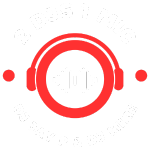Organizing a successful event requires meticulous planning and attention to detail, but one element that can make or break your gathering is the DJ. A skilled DJ doesn’t just play music; they create an experience that enhances the atmosphere and keeps your guests engaged. Here’s how a DJ can transform your event:
Step 1: Music Transitions
Smooth music transitions are crucial for maintaining the flow of your event. When the music flows seamlessly, attendees can continue to converse, laugh, and enjoy the party without interruptions. A DJ ensures that the music is appropriate for the moment and transitions naturally, keeping the energy consistent and enjoyable for everyone.
A skilled DJ will create a dynamic and fluid playlist that matches the mood of your event. For example, at a wedding, the music may start with soft background tunes during dinner and transition to upbeat dance music as the night progresses. At a corporate event, the music might be more laid-back during networking sessions and pick up the pace during social hours. The ability to read the room and adjust the music accordingly is a hallmark of a professional DJ.
Equipment Tips:
- DJ Controller: The Pioneer DJ DDJ-1000 is a popular choice among professional DJs for its intuitive layout and robust features. It offers a full-size jog wheel, four channels, and a club-style layout that makes it easy to create smooth transitions.
- Software: Serato DJ Pro and Traktor Pro are industry-standard DJ software options that provide powerful mixing capabilities. Both programs offer extensive libraries, seamless integration with DJ controllers, and advanced features like key shifting and beatmatching.
- Headphones: Sennheiser HD 25 headphones are renowned for their durability and clear sound quality. They provide accurate sound reproduction, which is essential for beatmatching and cueing tracks.
In addition to equipment, a DJ must have an extensive music library that spans various genres and eras. This ensures they can cater to diverse audiences and keep everyone entertained. Building and maintaining such a library requires time and effort, but it’s crucial for delivering a top-notch performance.
Step 2: DJ Interaction
A DJ’s role goes beyond spinning tracks. Interaction with the crowd is vital, especially when breaks are required. A great DJ is comfortable mingling with guests, making announcements, and encouraging people to dance. Their presence and ability to engage with the audience can turn a good event into a fantastic one.
Engaging with the audience helps create a personal connection and makes the event more enjoyable for everyone. A DJ who can read the crowd and respond to their energy can elevate the atmosphere and keep the party going. Whether it’s taking song requests, leading group dances, or making announcements, a DJ’s interaction with the audience is a key component of a successful event.
Equipment Tips:
- Microphone: The Shure SM58 is a legendary microphone known for its reliability and clear sound. Its robust construction makes it ideal for live events, and its cardioid pickup pattern ensures excellent sound isolation.
- Mixer: The Allen & Heath Xone:96 is a high-end mixer that offers superior sound quality and flexibility. It features six channels, a comprehensive EQ section, and multiple connectivity options, making it suitable for any event.
- Lighting: The Chauvet DJ GigBAR 2 is an all-in-one lighting solution that includes LED washes, strobes, and laser effects. It’s easy to set up and provides a variety of lighting effects to enhance the atmosphere.
Effective DJ interaction also involves using technology to create a more immersive experience. For instance, integrating social media platforms like Instagram and Twitter can encourage guests to share their experiences and connect with each other. Live streaming the event on platforms like Facebook Live or YouTube can also extend the reach of the event and allow those who couldn’t attend to join in the fun.
Step 3: Atmosphere
Creating the right atmosphere involves more than just playing the right music. DJs also need to manage lighting and other effects. Understanding the differences between various lighting effects and knowing when and how to use them is just as crucial as selecting the right songs. Proper lighting can significantly enhance the ambiance, making the event more immersive and memorable.
Lighting plays a critical role in setting the mood and creating visual interest. Different lighting effects can evoke different emotions and enhance the overall experience. For example, soft, warm lighting can create an intimate and cozy atmosphere, while vibrant, dynamic lighting can energize the crowd and encourage dancing.
Equipment Tips:
- Lighting: The ADJ Mega Par Profile Plus is a versatile LED par light that can be used for uplighting and wash effects. Its compact design makes it easy to set up and transport, and its RGB color mixing capabilities allow for a wide range of color options.
- Fog Machine: The Chauvet DJ Hurricane 1200 is a powerful fog machine that adds a mystical and engaging atmosphere to any event. It features a high-output design and a quick heat-up time, making it perfect for creating dramatic effects.
- Visuals: The Pioneer DJ RMX-1000 is a powerful remix station that allows DJs to create live remix effects and visual enhancements. It features a range of effects, including delays, reverbs, and filters, as well as a built-in sampler for adding custom sounds.
In addition to lighting, other atmospheric effects such as fog machines, bubble machines, and confetti cannons can add excitement and visual interest to the event. These effects can be synchronized with the music to create a cohesive and immersive experience.
Step 4: Memorable Experience
Ultimately, a DJ’s responsibility is to ensure that your event is a memorable experience for all. By using music and energy effectively, they help create positive and lasting impressions. Guests should leave the event feeling that they’ve shared a special and memorable moment. In any way they can, DJs are there to help their clients create unforgettable memories and meet their expectations.
Creating a memorable experience involves more than just playing great music. It’s about creating an emotional connection with the audience and making them feel like they’re part of something special. This can be achieved through thoughtful song selection, engaging interactions, and well-timed atmospheric effects.
Equipment Tips:
- Speakers: The QSC K12.2 is a powerful, versatile speaker that can fill any venue with clear and dynamic sound. Its robust construction and advanced DSP technology ensure excellent sound quality and reliability.
- Subwoofer: The JBL PRX818XLFW is a high-performance subwoofer that adds deep bass to enhance the music experience. Its compact design and lightweight construction make it easy to transport and set up.
- Backup Gear: Always have a backup controller, laptop, and cables to ensure seamless performance in case of technical issues. This includes having a second set of headphones, extra power cords, and a backup music library.
A DJ can also create a memorable experience by incorporating unique elements that reflect the client’s personality and preferences. This might include playing a special song that holds sentimental value, creating custom remixes or mashups, or incorporating live musicians or performers into the set.
Additional Considerations
To further enhance the DJ’s impact on an event, consider the following additional elements:
Customized Playlists: Creating a customized playlist that reflects the client’s tastes and preferences is a key aspect of a DJ’s job. This involves working closely with the client to understand their vision for the event and selecting songs that align with that vision. A customized playlist can help create a more personalized and meaningful experience for the client and their guests.
Sound Quality: Ensuring high-quality sound is essential for creating an enjoyable listening experience. This involves using professional-grade equipment and setting up the sound system correctly to avoid issues like feedback, distortion, and uneven volume levels. A DJ should also perform sound checks before the event to ensure everything is working properly.
Event Coordination: A DJ often works closely with other event professionals, such as wedding planners, photographers, and venue staff, to ensure the event runs smoothly. This involves coordinating schedules, setting up equipment, and troubleshooting any issues that arise. Effective communication and teamwork are essential for delivering a successful event.
Adaptability: A DJ must be adaptable and able to handle unexpected changes or challenges that may arise during the event. This might include adjusting the playlist to accommodate a change in the schedule, dealing with technical issues, or responding to guest requests. Being able to stay calm and composed under pressure is a valuable skill for any DJ.
Professionalism: Maintaining a high level of professionalism is crucial for building trust and credibility with clients. This involves being punctual, dressing appropriately, and conducting oneself respectfully and courteously. A professional DJ also respects the client’s wishes and works diligently to meet their expectations.
Case Study: A Wedding Event
To illustrate how a DJ can make an event unforgettable, let’s take a look at a case study of a wedding event.
The Setting: The wedding was held at a picturesque outdoor venue with a stunning view of the sunset. The couple wanted a romantic and elegant atmosphere for their ceremony and reception, followed by a lively dance party.
The Plan: The DJ worked closely with the couple to create a customized playlist that included their favorite songs and special requests from family and friends. The playlist was designed to transition seamlessly from the ceremony to the reception and then to the dance party.
The Execution: During the ceremony, the DJ played soft, instrumental music that complemented the serene outdoor setting. As the couple exchanged vows, the music swelled to create an emotional and memorable moment.
For the reception, the DJ played a mix of classic love songs and contemporary hits, creating a warm and inviting atmosphere. The lighting was set to a soft, romantic glow, and the DJ used subtle lighting effects to enhance the ambiance.
As the evening progressed, the DJ gradually increased the tempo and introduced more upbeat songs to get the guests on the dance floor. The DJ interacted with the crowd, took song requests, and led group dances, creating an energetic and festive atmosphere.
The Outcome: The wedding was a resounding success,



Leave A Comment